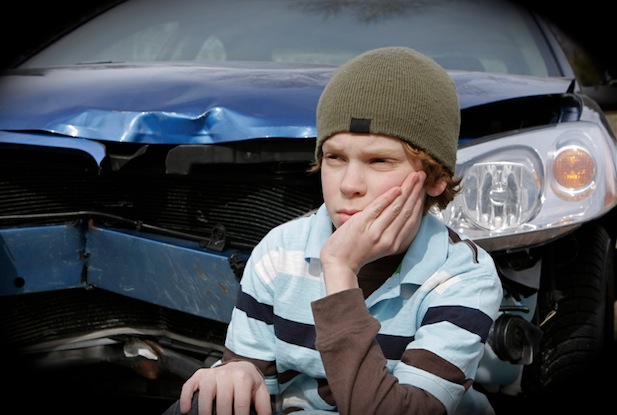Special Considerations for Children Under the SABS

The Statutory Accident Benefits Schedule – Accidents On or After November 1, 1996 (the “SABS”) clearly defines the meaning of a “spouse”, but does not define the age group within which a person is said to be a “child”. Rather, the SABS outlines different rules applicable to persons of various ages, including children under 15, under 16, and under 18.
This article summarizes the various ways in which the SABS deals with children and takes a look at how the proposed changes to the definition of catastrophic impairment may affect children. There are subtle differences when dealing with medical benefits, income replacement benefits, non-earner benefits and catastrophic impairment.
Medical and Rehabilitation Benefits
The limit amounts for medical and rehabilitation benefits are the same whether the injured party is a child or an adult. If a child is deemed catastrophic, the benefits are available for life.
For non-catastrophic claims, however, the time period differs. If the child was under 15 at the time of the collision, then the medical and rehabilitation benefits are payable until the child’s 25th birthday. Anyone who is at least 15 years of age at the time of the collision will have their medical or rehabilitation benefits payable (for expenses incurred) for a period of 10 years.
Income Replacement Benefits
If a child was employed at the time of the collision, there is no age restriction for eligibility for income replacement benefits.
Where the child was not employed at the time of the collision, but was employed for at least 26 of the 52 weeks before the collision (or was receiving Employment Insurance benefits) at the time of the collision, there are further restrictions. The child must be at least 16 years old or excused from attending school under the Education Act and, they must, as a result of and within 104 weeks of the collision, have suffered a substantial inability to perform the essential tasks of the employment in which the child spent the most time during the 52 weeks before the collision.
Non-Earner Benefits
A person under the age of 16 years is not eligible for non-earner benefits. This means that a child who is injured, for example, at the age of 15, will only become eligible to apply for non-earner benefits when they turn 16. The child will then have to meet the criteria for eligibility, which includes that the child suffers an inability to carry on a normal life as a result of the collision and does not qualify for income replacement benefits.
If the child turns 16 within 104 weeks after the collision, and they meet the criteria for non-earner benefits, then these are payable at the rate of $185 per week. However, if the child was a student, or had recently graduated the benefit may double. If a child was enrolled on a full-time basis in elementary, secondary or post-secondary education at the time of the collision, or completed his or her education less than one year before the collision and was neither employed nor a self-employed person after completing his or her education and before the collision, in a capacity that reflected his or her education and experience, the benefit doubles to $320 per week, provided that more than 104 weeks have elapsed since the onset of the disability.
Definition of Catastrophic Impairment
A person under the age of 16 who sustains a catastrophic injury is not typically treated any differently in determining whether they have sustained a catastrophic impairment.
However, in the very rare circumstances where the child is so young that they are unable to comprehend the questions or provide an appropriate response when, for example, the Glasgow Coma Scale is administered, the SABS provides for an alternative method for determining whether the child has sustained a catastrophic impairment. In such a case, the impairment is deemed to be the impairment that is most analogous to the impairments traditionally thought of for adults, i.e. a brain impairment (clause 2(d)), an impairment or combination of impairments resulting in 55 per cent or more impairment of the whole person (clause 2(e)) and an impairment that results in a class 4 impairment or class 5 impairment due to mental or behavioural disorder (clause 2(f)).
Proposal for Paediatric Traumatic Brain Injury
The Financial Services Commission of Ontario (FSCO) has commissioned a panel of “experts” to make certain recommendations for changes to the benefits available to those who are catastrophically injured in motor vehicle collisions.
Among those recommendations is that children be treated differently to adults when it comes to brain injury. The panel proposes an “automatic criteria”, such that anyone under the age of 18 who is admitted to a Level 1 trauma centre and has positive CT or MRI evidence of bleeding on the brain or who is admitted to a publicly funded rehabilitation facility is automatically deemed to be catastrophically impaired.
If the FSCO expert panel’s recommendations are implemented, they will drastically change the way that children under the age of 18 who sustain brain injury are treated. The designation of catastrophic in the defined cases will be automatic.
Presently, children under 18 are not treated any differently to adults when they are assessed for catastrophic impairment (unless the child is very young and not amenable to the standard tests). When it comes to non-catastrophic injuries, it is clear from the foregoing that there are rules applicable for certain age groups (under 15, under 16, and under 18) in terms of the duration of and eligibility for medical and rehabilitation, non-earner and income replacement benefits.
